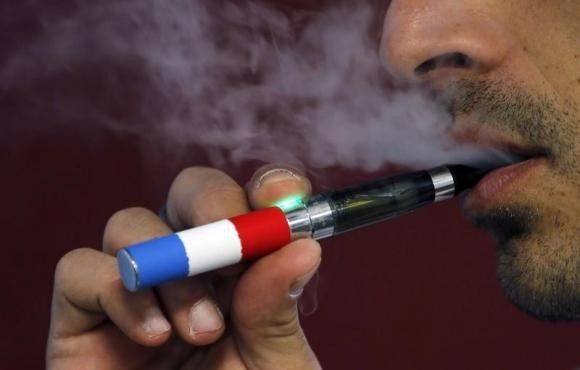Harmful Effects Of e-Cigarettes

E-cigarettes, though commonly marketed as safe, have been found to contain dangerous solvents.
The solvents, known to be lung irritants, are composed of nicotine and flavouring, and can even transform into carbonyls, or cancer-causing chemicals such as acetaldehyde and formaldehyde.
Early e-cigarettes didn't deliver the same nicotine hit as cigarettes, so researchers developed technology to heat the tobacco at higher temperatures in e-cigarettes. These higher temperatures have the side effect of breaking down the solvents in the vaping device to produce the carbonyls. If e-cigarettes maximise the hit-delivering power while utilising vaping liquids containing glycerin and propylene glycol, formaldehyde levels can reach that of tobacco smoke. Further, vapers could be inhaling large quantities of aerosols, the most toxic size of compounds, that can deposit in the lung's tiny airways, thus preventing the smooth passage of air in the body.
E-cigarettes are fast becoming mainstream, with vaping product sales estimated to have reached approximately $1.7 billion in 2014. E-cigarette sales could exceed normal cigarette sales in 10 years, and it is reported that 20 percent of U.S. smokers have tried vaping, as have 10 percent of high school students in the U.S.
Much of the particulate matter in e-cigarette vapors is about 3 milligrammes per cubic meter of air, which is about 100 times as high as the Environmental Protection Agency's 24-hour limit for fine air particles.
Hundreds of vaping products are sold in the market today. These use chemical flavorings and food preservatives that have not been tested to be safe when inhaled. All the tests done on many of these solvents certifies them as safe to ingest.
In an e-cigarette, the device heats up a liquid that is then inhaled, or vaped. E-cigarettes do not release smoke because they don't burn anything. While scientists have maintained that e-cigarettes are less harmful than normal cigarettes, few studies have looked into the toxicity of their vapors, and their former classification as safe products is now circumspect.
In addition to the toxicity contained in the vapors, these vapors also make it harder to kill dangerous germs. A scientist at the VA San Diego Healthcare System exposed Staphylococcus aureus to e-cigarette vapors and found that these pneumonia-causing antibiotic resistant bacteria proved harder to kill using a germ-killing protein, a natural antibiotic produced in the human body. One reason could be that germs exposed to e-cigarette vapors produced a thick coating around themselves for protection.
Germs exposed to e-cigarette vapors also replicated much faster in mice than did germs that weren't exposed to these vapors.
These studies don't prove that e-cigarettes are more harmful than their traditional counterparts, but as these vaping devices gain popularity, they should not be considered harmless either.
To contact the writer, email: sonali.raj@gmail.com





















